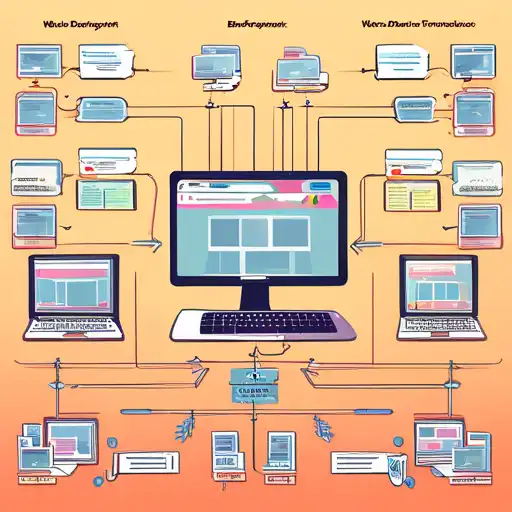Introduction to Web Development Frameworks
In the ever-evolving world of web development, choosing the right framework can be a daunting task. With a plethora of options available, each promising to be the best, developers often find themselves at a crossroads. This guide aims to simplify that decision-making process by highlighting key considerations and comparing popular frameworks.
Understanding Web Development Frameworks
Web development frameworks are designed to support the development of web applications by providing a standard way to build and deploy them. They offer a foundation upon which developers can build, saving time and effort by eliminating the need to start from scratch.
Types of Frameworks
There are primarily two types of web development frameworks:
- Frontend Frameworks: These are used for the client side of web applications, focusing on the user interface and experience. Examples include React, Angular, and Vue.js.
- Backend Frameworks: These are used for the server side, handling database operations, user authentication, and more. Examples include Django, Ruby on Rails, and Express.js.
Key Factors to Consider When Choosing a Framework
Selecting the right framework depends on several factors:
- Project Requirements: The nature and requirements of your project play a crucial role in determining the most suitable framework.
- Learning Curve: Some frameworks are more beginner-friendly than others. Consider the skill level of your team.
- Community and Support: A strong community and good documentation can be invaluable resources.
- Performance: Evaluate the performance benchmarks of the frameworks you're considering.
Popular Web Development Frameworks Compared
Here's a quick comparison of some of the most popular web development frameworks:
- React: A JavaScript library for building user interfaces, known for its virtual DOM feature.
- Angular: A platform and framework for building single-page client applications using HTML and TypeScript.
- Vue.js: A progressive framework for building user interfaces, designed to be incrementally adoptable.
- Django: A high-level Python web framework that encourages rapid development and clean, pragmatic design.
Conclusion
Choosing the right web development framework is crucial for the success of your project. By considering your project requirements, team expertise, and the strengths and weaknesses of each framework, you can make an informed decision that aligns with your goals. Remember, the best framework is the one that fits your project's needs and your team's skills.
For more insights into web development, check out our technology blog.
